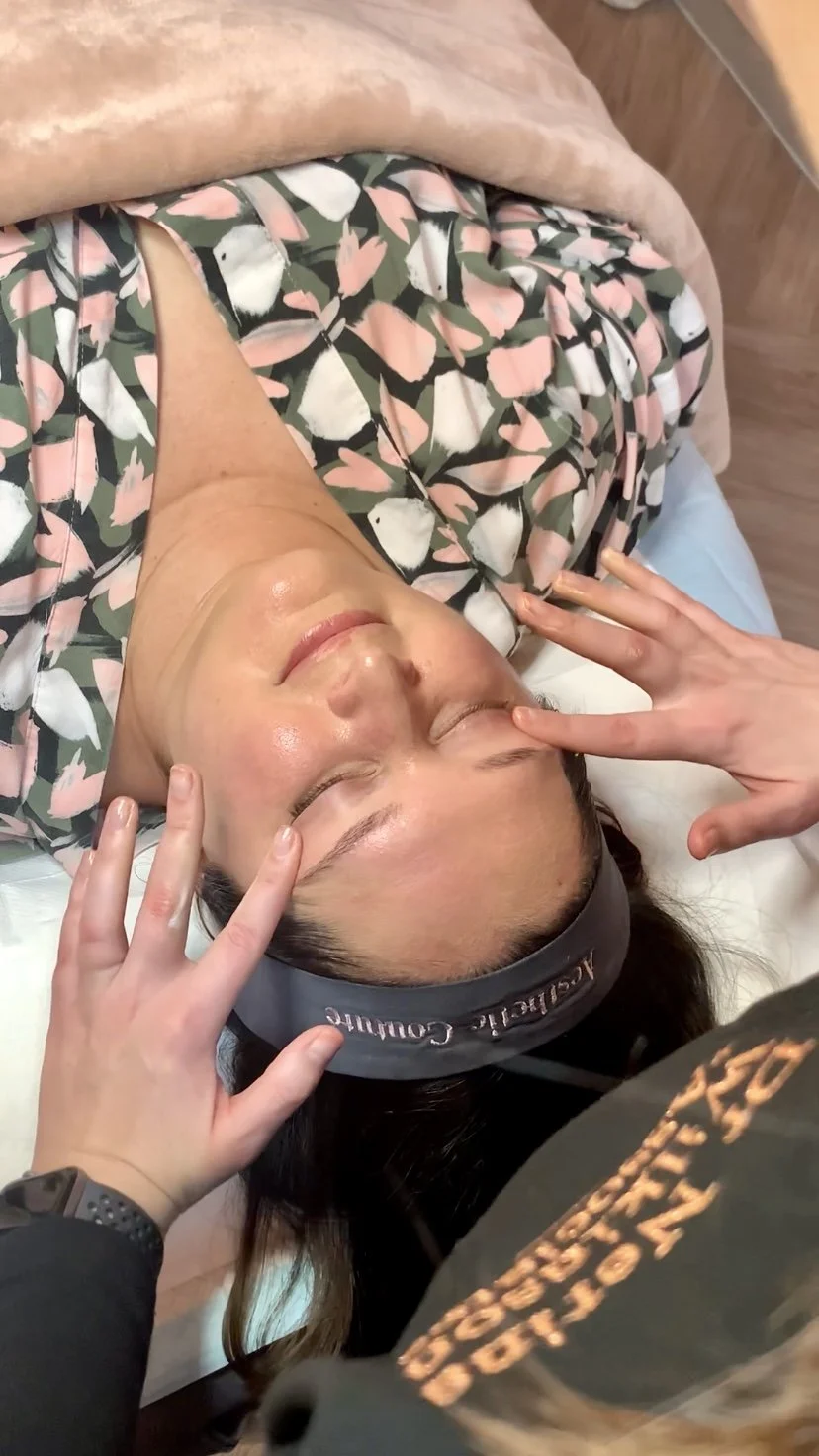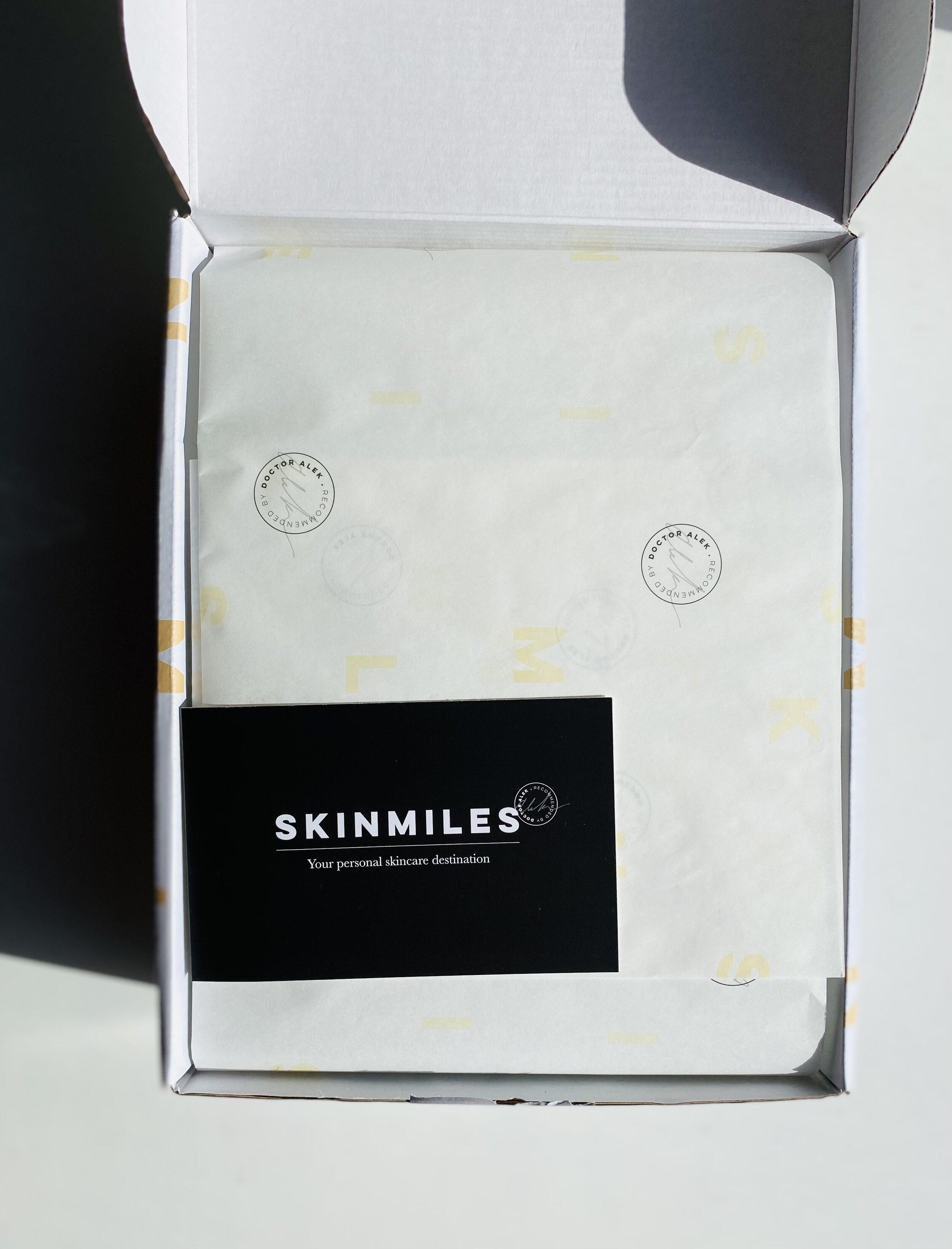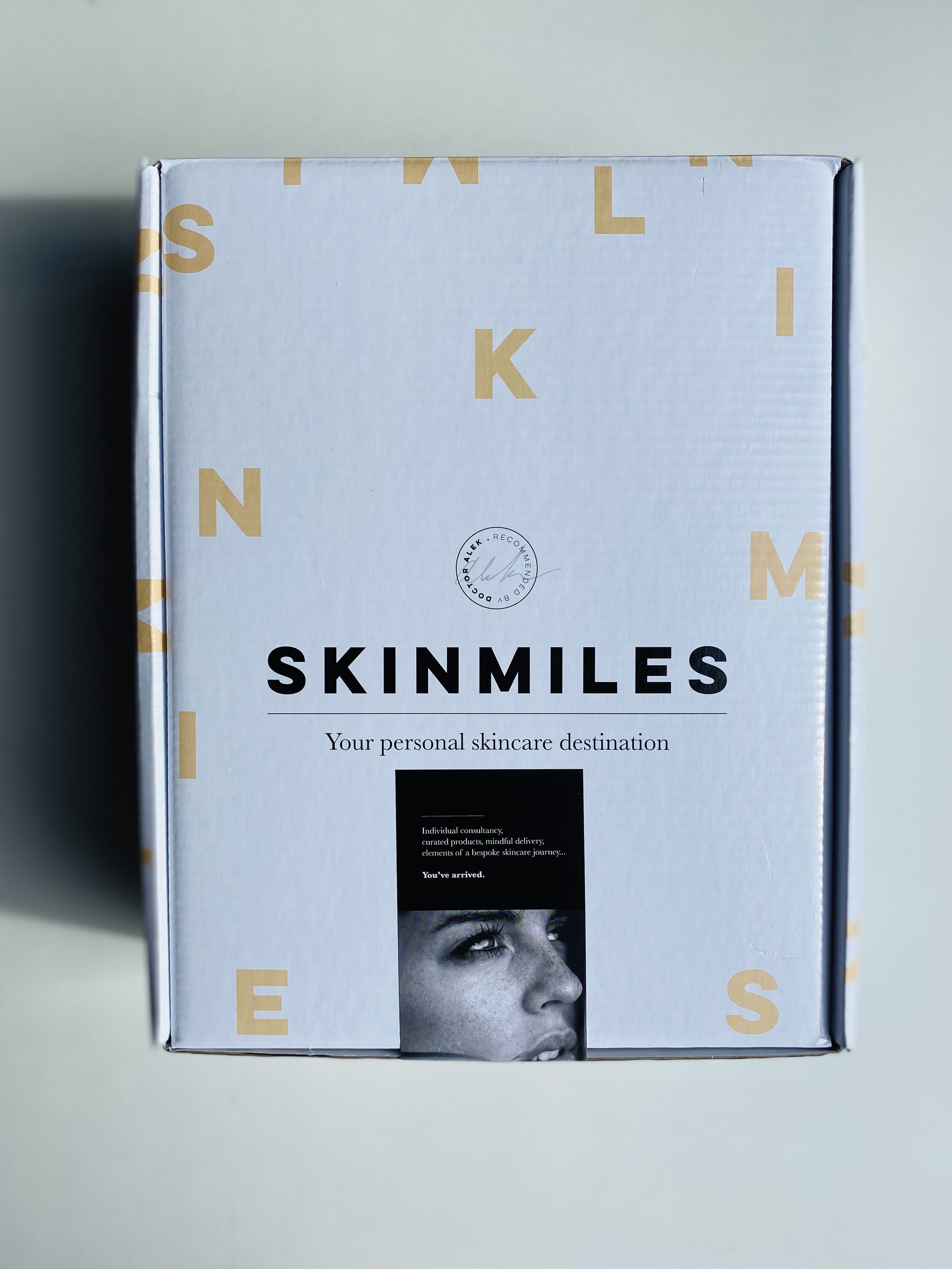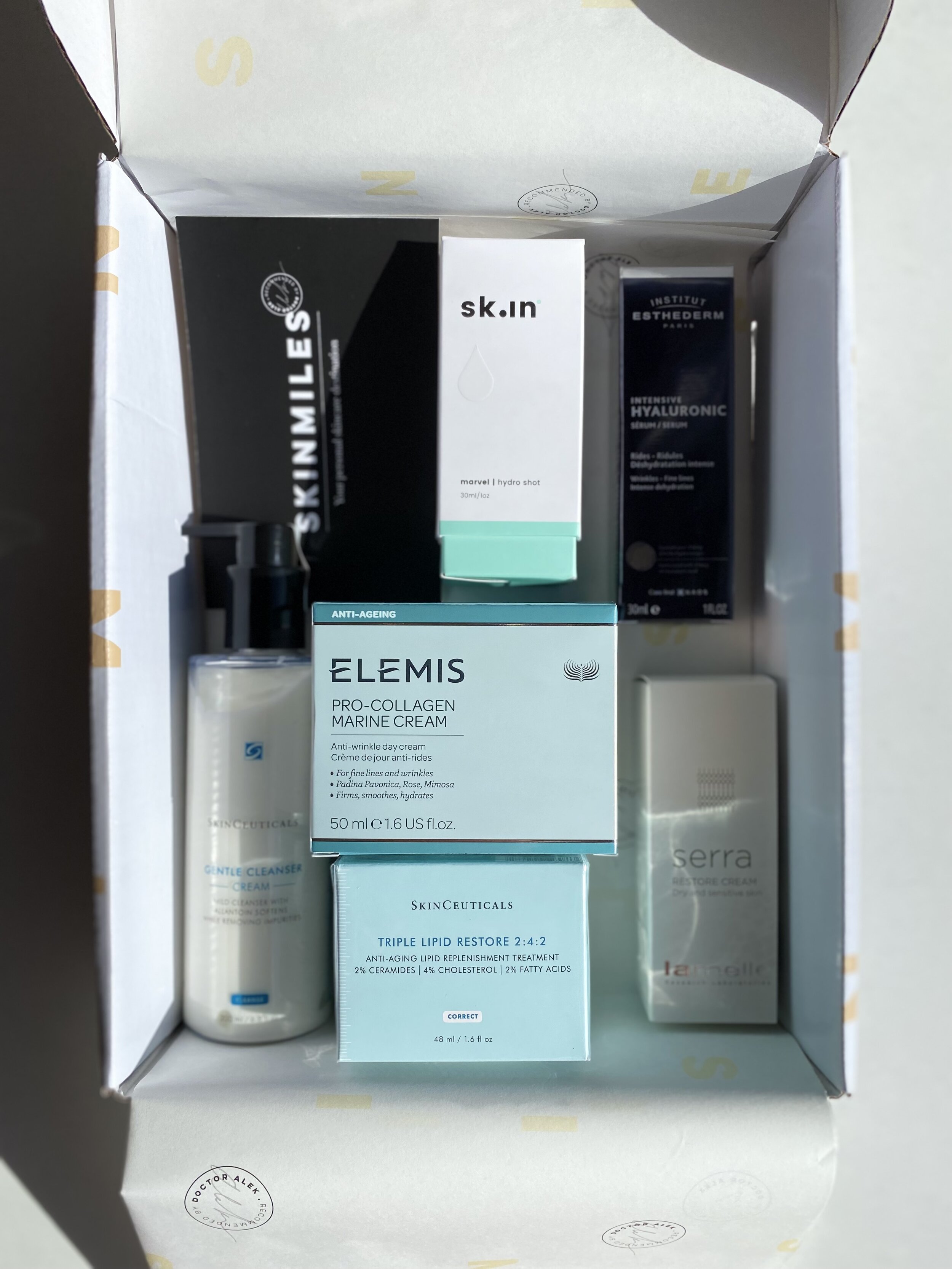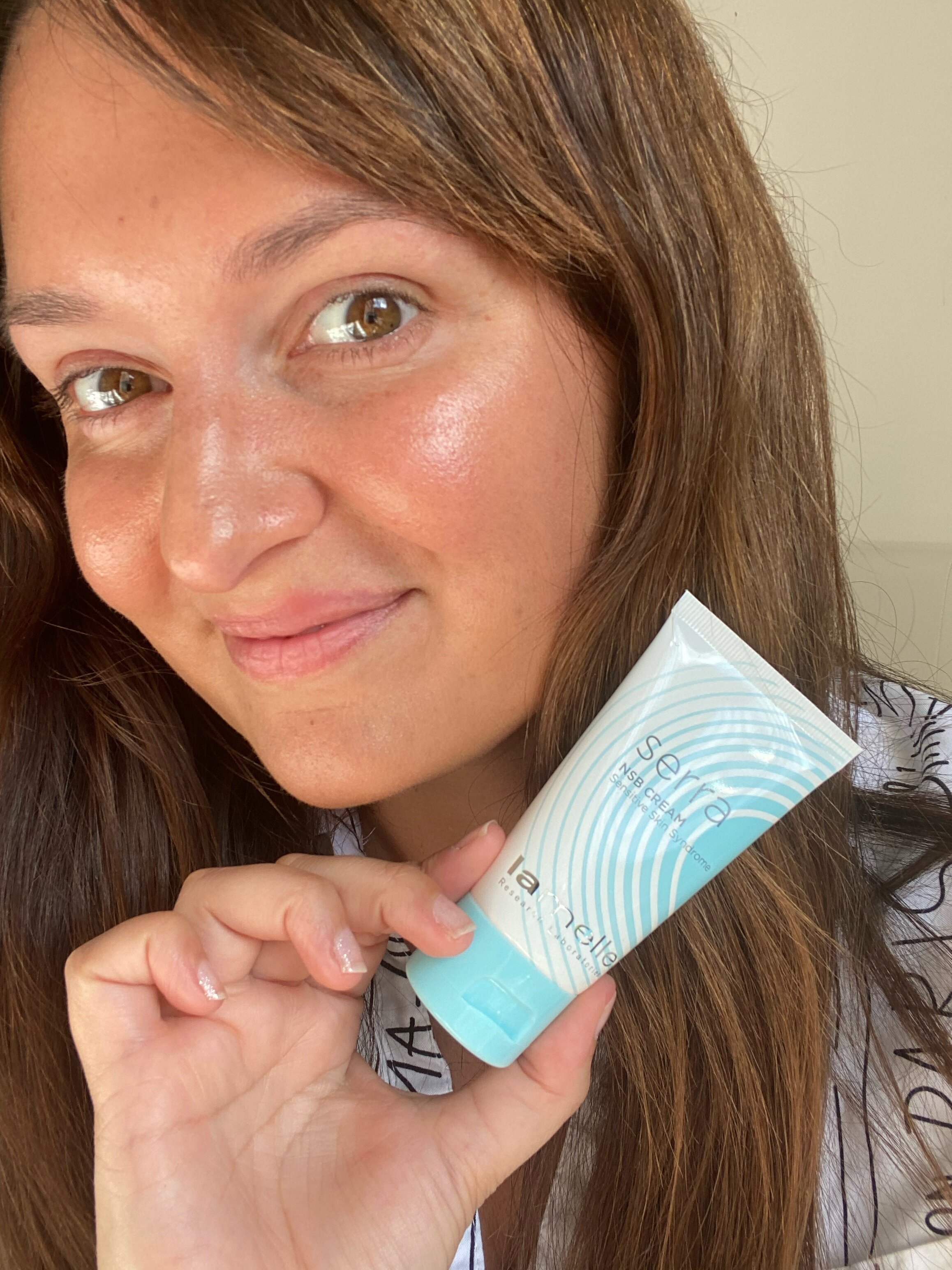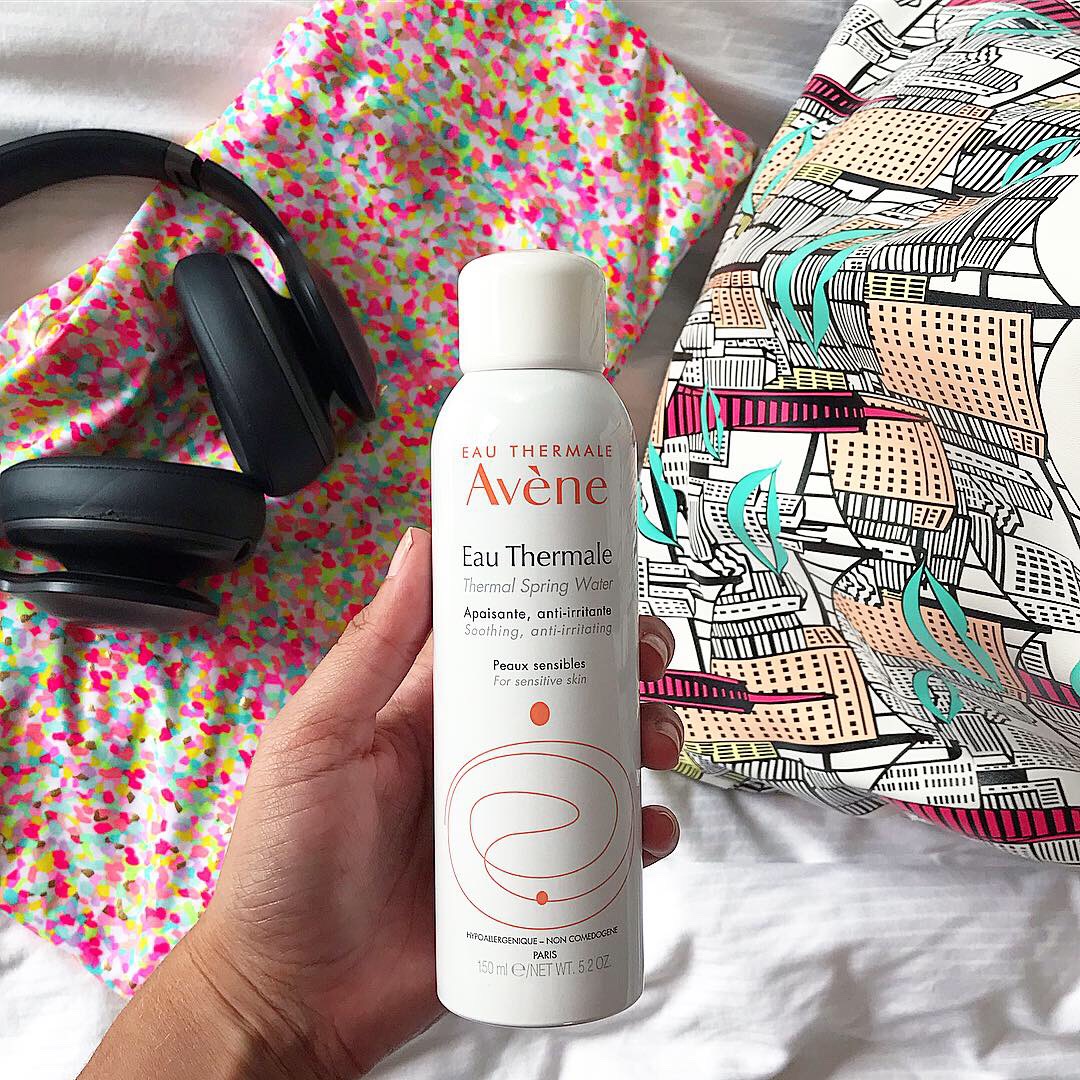Getting married soon? Opt for the Glow Getter Treatment at Dr Nerina + Associates to achieve that flawless bridal glow.
SkinMiles Special: Everything You Need To Know About Winter Skin
‘Winter skin’ is a problem that a lot of us are currently experiencing. Dryness, dehydration, rosacea – the list is endless. Founder of SkinMiles, Dr Alek Nikolic comes to the rescue with his sage advice and product recommendations in this informative interview:
KELLI: Why does our skin change so dramatically during the winter months?
DR ALEK: This is purely an environmental change. The cold weather tends to be dryer with less humidity. This naturally strips our skin from essential moisture through trans epidermal loss. Compromise to the skin barrier will aggravate this water loss. Adding the use of heaters which further dry the air will also aggravate the skin and promote dryness.
KELLI: What can we do to protect our skin during winter?
DR ALEK:
- Avoiding very hot showers and baths.
- Adding a humidifier In our living area.
- Changing your moisturiser to a thicker consistency that contains lipids and ceramides.
- Adding a HA (Hylaronic Acid) serum to your regime.
- Using a creamy cleanser.
- Using a serum with vitamin C and E as these antioxidants help to protect the skin barrier.
KELLI: What basic rules should we be applying during winter?
DR ALEK:
Sunscreen is a must, irrespective of the weather. Try and drink at least 2 litres of water per day. Eat healthy fats such as olive oil (in your salad dressing) and avocados.
KELLI: What is the difference between dry and dehydrated skin?
DR ALEK: Dehydrated skin is fairly common and as a result most of us will suffer from dehydrated skin at one time or another.
Causes of Dehydrated Skin:
1. Weather and environmental changes
2. Pollution
3. Diet
4. Skin product usage (incorrect ingredients or excessive use)
5. Medications
6. Over-cleansing (or over-exfoliating) and too rough handling of the skin. The weather and environment are big ones.
Our skin experiences water loss in cold weather and when the environment has a low humidity. Heat sources such as fires and heaters evaporate water from our skins. Sun exposure during the summer months also play a big role in dehydrated skin.
Interesting Fact:
Dehydration affects all skin types including oily skin: Oily skin may look and feel oily but still lack water. This is typically caused by people who over-cleanse, over-exfoliate, or use harsh rough and granular cleansers.
These are the most common areas of dehydrated skin:
1. Forehead
2. Outer cheeks
3. Around the eyes
Dry skin is due to a naturally low production of oil or sebum and as a result this is a skin condition, and this is genetically determined. Very simply put, if your skin has any shine to it, then you do not have dry skin as the shine is a sign of oil or sebum production.
There are some causes of dry skin that is not linked to one’s genetics:
· Natural Aging: as we get older, our hyaluronic acid production (water holding molecule) reduces and to add insult to injury our sebum or oil production in our skin is also reduced.
· Lack of Essential Fatty Acids in the Diet
How to Treat Dry Skin:
- Use humectants & occlusive ingredients to minimize water loss.
- Help your skin hold onto water with humectant ingredients such as Hyaluronic Acid.
- Prevent water evaporation with occlusive ingredients such as petroleum jelly (eg/ Vaseline)
- Use lipids to replenish the reduction of sebum content with ceramides and fatty acid ingredients.
KELLI: How does one take care of naturally oily skin during winter?
DR ALEK: This depends on how the skin changes. Most oily skin sufferers will not see a dramatic change in their skin so their regimes should continue as is. However, if dryness is noted, I would consider adding a HA based serum to one’s regime.
KELLI: What ingredients should I look out for when purchasing skincare products during winter?
DR ALEK:
- Polyhydroxy acids (PHA’s) are small molecules that penetrate the skin and have a number of effects including collagen stimulation, increasing hydration by stimulating GAGS and they help to soothe the skin and produce minimal irritation.
- Lactobionic Acid, a patented non-irritating “Bionic” PHA derived from milk sugar, helps prevent and reverse the appearance of photo-ageing, including fine lines and wrinkles, uneven pigmentation, enlarged pores and roughness. A natural humectant, it binds water to create a moisturising barrier on skin.
- Gluconolactone strengthens the skin’s barrier function, reducing sensitivity to irritants and skin redness over time by reducing glycation. Gluconolactone does not increase the potential for sun sensitivity.
- Hyaluronic Acid (HA) is our own hydrating molecule found in our skins. Its function is to hold water and improve moisturisation. Hyaluronic Acid is a glycosaminoglycan (aka a sugar-based protein) which acts as a structural component of skin and is found in almost all living organisms (including the human skin and body). The importance of this ingredient lies in its ability to retain moisture: one HA molecule will bind to 1000 water molecules.
- Ceramides and Cholesterol are fairly new in skincare and should be seen as vital skin care ingredients for dry skin sufferers. Ceramides and cholesterol have a number of skin benefits:
· Ceramides: restore skin’s barrier function and nourish skin
· Cholesterol: is essential for building the structure of skin’s barrier and maintaining elasticity
- Antioxidants are vital ingredients for any skin type or skin concern including dry skin. Antioxidants are a group of ingredients that reduce free-radical damage and environmental damage within our skins. Very simply when our skin loses its ability to retain water dry skin develops. Antioxidants will help repair and prevent this moisture loss and help repair the skin barrier. Vitamin C, Vitamin E and Ferulic acid all potent antioxidants.
- Glycerin is a skin-replenishing and skin-restoring ingredient that is naturally found in the skin. Glycerin main function in the skin is to keep it looking healthy and to improve hydration by maintaining the skin’s moisture content. It increases hydration levels, improves skin barrier function and health and has a synergistic effect with Hyaluronic Acid.
KELLI: What tips do you have to prevent/help with chapped lips?
DR ALEK: Similar to approaching dry skin. One should use humectants and moisturising ingredients such as HA, ceramides, fatty acids and lipids.
Here are my suggestions (all available from SkinMiles):
LA ROCHE-POSAY Cicaplast Levres Lips (Click here to buy)
FILORGA Nutri Filler Lips (Click here to buy)
ALPHA-H Absolute Lip Perfector (Click here to buy)
BIODERMA Atoderm Baume Lèvres (Click here to buy)
TEAM Dr Joseph Intense Hyaluronic Lip Treatment (Click here to buy)
IS CLINICAL Youth Lip Elixir (Click here to buy)
KELLI: Dry hands – they’re worse than ever due to constant hand washing, sanitizing and the colder weather. What products can you recommend for this?
DR ALEK:
- Look for hand cleansers that are creamy and/or moisture replenishing.
- Reduce the use of soap. We can just use running water.
- Apply a hand cream after each wash.
- Remember to exfoliate your hands once a week with a chemical exfoliator such as glycolic, lactic, or salicylic acid.
- Use hand sanitisers that moisturise at the same time.
Here are my product suggestions (all available from SkinMiles):
OPTIPHI Renew Anti-Aging Hand Therapy (Click here to buy)
TEAM Dr Joseph Daily Cellular Hand Cream SPF10 (Click here to buy)
CURALOE Aloe Vera Hand & Body Lotion (Click here to buy)
DERMAQUEST GlycoBrite Hand and Body (Click here to buy)
GOODLEAF CBD Hand Cream (Click here to buy)
KELLI: How necessary are body exfoliants during winter?
DR ALEK: Similar to our face we need to exfoliate the skin on the rest of our body and In the same fashion It Is best to use chemical based exfoliators versus granular scrubs. exfoliation removes the dead outer layer and at the same time stimulates new cell production. glycolic acid has the added ability to stimulate GAG's (glucose amino glycans) that are vital to keep our skins hydrated and glowing.
KELLI: How necessary are facial exfoliants during winter? Will they aggravate sensitive, dry winter skin?
DR ALEK: We should exfoliate our skin year round however we may have to reduce the exfoliation frequency during the winter months. If during the summer months one is exfoliating twice or three times weekly then once a week during winter should be fine. If one's skin becomes too sensitive then we may have to reduce the exfoliation to every second week. Sensitive, dry winter skin should be able to handle more 'gentle' chemical exfoliators such as lactic or mandelic acid. Another good chemical exfoliator for sensitive skin is citric acid.
KELLI: For rosacea sufferers (like myself), what tips do you have to keep it under control? I find that things such as fire, heaters and red wine (factors that I can’t really avoid during winter) are quite triggering.
DR ALEK: Avoiding triggering factors can help but is not always practical. Rosacea is difficult to manage as the redness is caused by hundreds of little veins in the superficial layer of the skin. The best approach would be to consider laser vein removal.
There are a number of great topical products that will help calm the sin and reduce the degree of the redness experienced such as:
IS CLINICAL Pure Calm Trial Kit (Click here to buy)
NEOSTRATA Redness Neutralizing Serum (Click here to buy)
LAMELLE Serra NSB Cream (Click here to buy)
(All products are available from SkinMiles)
KELLI: How often should one mask during winter? What are the best ones to use: sheet masks, leave-on masks, rinse-off masks?
DR ALEK: One can use hydrating masks as often as you want. The type of mask is not really important but rather a personal preference.
Dr Alek says: “All 3 contain vital skin barrier repair and hydrating ingredients which are essential during the colder and dryer winter months. The SkinCeuticals TLR and sk.in marvel hydro shot also contain antioxidants which further help in repairing and maintaining the skin barrier and helps to reduce inflammatory damage and free radical environmental damage.”
Dr Alek’s TOP 3 PRODUCT PICKS:
1. Lamelle Serra Restore Cream (Click here to buy)
2. SkinCeuticals Triple Lipid Restore 2:4:2 (Click here to buy)
3. sk.in marvel | hydro shot (Click here to buy)
Kelli says: “Each product has hydrating, soothing formulas that don’t dry out the skin. I have sensitive, temperamental skin which likes to act up during winter and these products seem to do the trick every single time. Remember: Hyaluronic acid is a key ingredient when buying winter beauty products as it plumpens and hydrates the skin.”
Kelli’s TOP 3 PRODUCT PICKS:
1. SkinCeuticals Gentle Cleanser Cream (Click here to buy)
2. Esthederm Intensive Hyaluronic Serum (Click here to buy)
3. Elemis Pro Collagen Marine Cream (Click here to buy)
*All products available on www.skinmiles.com. If you’re unsure of what products to buy or have any other skincare related query, chat to an experienced SkinMiles somatologist live on the site.
*This article was sponsored by SkinMiles.
The Lowdown On Sensitive Skin
I’ve always been fascinated by skin sensitivity. Mainly, because I have it. I had the opportunity to chat to Karen Bester, Lamelle Medical Training Manager and pick her brain about this skincare phenomenon that so many of us experience on a day-to-day basis. Here’s what she had to say:
KELLI: Define the term ‘sensitive skin’.
LAMELLE: Sensitive skin is skin that reacts to ingredients, products, changes in temperature and weather where the bulk of the population would not see any change in their skin. The reaction can vary from just feeling tight, through dryness and inflammation, right up to a full allergic reaction that could include swelling, puffiness, itchiness and hives.
KELLI: How do you know if you have sensitive skin?
LAMELLE: The easiest way to find out if your skin is sensitive is if you know you have to be cautious when applying particular products to your skin. For instance, if you’re on a weekend away and you can’t just grab your best friend’s general day-to-day BB cream or moisturiser and apply it to your skin because you know your skin will react, you probably have sensitive skin.
KELLI: Are there different variants of sensitive skin?
LAMELLE: There definitely are variants.
Some people will just have the odd bit of redness when they use a product that their skin is sensitive to. Others might find that their skin always feels sensitive and sore. I had a student once who mentioned that her skin was so sensitive it went red when the wind started to blow on it.
Some patients who have severe medical conditions like eczema and acne need to have cortisone creams on hand at all times in case of flare-ups.
Others need to be careful in winter when the air is less humid and their skin becomes dry - thus resulting in sensitivity.
KELLI: Can sensitive skin be cured?
LAMELLE: This would depend on the cause of the sensitivity. If you have a genetic predisposition to sensitive skin, curing it would be difficult. What we can however do, is add ingredients that are specifically focused on correcting the problems that lead to the sensitivity in your skin. In some cases we might even find, that with a little help, your skin will normalise functions and we might be able to get your skin back to its unreactive state.
If we know that the sensitivity was triggered by a specific ingredient or treatment, it is easier to cure it. Firstly, you need to remember not to apply that ingredient to your skin. We then need to correct what was ‘broken’ in your skin and make sure that it is properly fixed before you apply your usual products again. Avoiding the sensitising product may mean your skin might never react with sensitivity ever again.
Karen Bester, Medical Training Manager for Lamelle and skincare sensitivity whizz.
KELLI: What ingredients should one look out for in a skincare product if you have sensitive skin? (Both to avoid and help prevent sensitive skin).
LAMELLE: If we truly consider sensitive skin, any ingredients that the skin gets exposed to regularly might cause irritation and an allergic reaction.
Dr Bradley Wagemaker, who is our formulating doctor and co-owner of Lamelle, insists on only formulating our products in such a way that they have the biggest potential to correct skin with the smallest risk for reaction in all skins. There in too lies a challenge – some ingredients might cause slightly more irritation. In those cases we will train the product specialist who are providing you with the products that they need to use these ingredients with care. This is why your skin care therapist will advise you to add in a product slowly over a few weeks and not just start using it twice a day in large amounts.
As a rule of thumb though we would suggest that you not use highly fragrances products and products where colourants have been added.
Then the argument for natural vs. chemical comes up – so let’s not ignore it.
The truth is that even natural ingredients have the potential to harm – arsenic and belladonna come to my mind. The word chemical is also misleading. H-2-O is a chemical and your body is made up of mostly H2O. Yes I do agree there are harmful chemicals in our world. I just don’t know why any manufacturer of skin care products, that wants a loyal client following, would put harmful chemicals in their product knowing that they are going to cause damage.
At Lamelle many of the ingredients we use are made in a laboratory. The most important ingredient in our Serra range is made in a laboratory.
Why?
In the laboratory we can mimic structures and molecules that you have in your body. This means we can replace a full structure – like the lipid bi-layer – exactly as it would look in between your cells in your corneum (outer layer of skin). There might be plant extracts that are close to compatible oils but none that will bio-mimic this structure. This gives us very safe and very effective treatment options that have been well researched to give us results.
KELLI: What is the most common age group for sensitive skin?
LAMELLE: Even though age is not a determining factor in sensitivity, it is true that the older skin is, the more risk for sensitivity there is.
The key skin structure in protecting the skin form sensitivity is the lipid bi-layer. This layer protects the viable skin from foreign substances that might penetrate and cause irritation. This is also the layer that traps water inside the skin. As we age we produce less of the components that make up this layer – affecting our water binding and potential for reaction.
The older you are the more potential allergens you have been exposed to, making you a higher risk to acquire sensitivity.
Genetic predisposition is not linked to age though.
KELLI: What triggers sensitive skin?
LAMELLE: In the skin, foreign substances or substances that your skin perceives to be irritating, trigger a nerve response. The nerves then trigger an immune response that then trigger an inflammatory response. The inflammation then affects how the barrier is produced. This then becomes a vicious cycle/circle of reactivity.
We also now have data to support that in some people their nerves are abnormally sensitive to any change in the skin due to receptors on the nerve walls being activated. These are people who will perceive constant sensitivity, pain and discomfort of their skins. In some cases their skin is also much more reactive than any other person that they know. This condition is called Sensitive Skin Syndrome.
Generally, there are a few categories of patients with sensitive skin:
· Medical conditions, psoriasis, eczema or atopic dermatitis, acne rosacea.
· Genetic predisposition.
· Hormonal fluctuations during pregnancy, peri-menopause and menopause might trigger sensitivity.
· Exposure to ingredients or procedures that cause the skin barrier to be impaired and the skin to be unprotected e.g. if you have a chemical peel and do not use the correct aftercare products.
· Exposure to a harsh environmental factors - for instance working in the sun all day or living in a desert.
At Lamelle we have focus on what you are seeing in your skin:
· Correct the lipid bi-layer (and don’t just apply a cream on top of the skin).
· Correct the pH of skin that has been dry for a long period of time. When the pH is impaired the skin cannot rebuild its own lipid bi-layer.
· Inhibit the inflammatory responses (calm and sooth inflammation).
· In sensitive skin syndrome, we turn off the over active nerve ending.
· Where required we add anti-microbial ingredients just to make sure we are protecting the skins integrity from microbes that might cause infections.
KELLI: Does diet play a role in increasing skin sensitivity?
LAMELLE: A poor diet will definitely affect you skin’s general condition. If you tend to have sensitivity to what you eat this will also cause reaction of your skin.
KELLI: What skincare routine should one have in order to keep sensitive skin under control?
LAMELLE: A good basic skin care routine is extremely important for any patient with a sensitive skin. The focus is to maintain a good barrier, calm any inflammation, correct the pH of the skin and protect your skin from possible irritants.
Cleanse, essence, moisturiser is the minimum basic with sunscreen during the day. Your skincare therapist might add some serums but that would depend on how much sensitivity you are experiencing at the point of your visit.
KELLI: What are the best products from Lamelle to help manage sensitive skin?
LAMELLE: All Lamelle, skin care products are formulated with sensitivity in mind. This does mean that your skincare therapist could add any of the products to your skincare regime. It’s important to initially stabilise and normalise processes in the skin that allow the sensitivity to take place. For this we always go back to the Serra range of products.
Your skincare therapist will choose the products that are most suited to your skin in her consultation with you.
However, I recommend using the below products during the following steps:
1. Cleanse
Use the Lamelle Serra Cleanser (R220). This is a creamy gel cleanser that contains very mild surfactants to break the surface tension of oils on your skin to remove oils, dirt, grime, pollutants and makeup off your skin.
2. Applying a Skin Essence
Aka skincare priming liquid. Your skincare therapist will choose the one that is most suitable for your skin:
· Skin Essence Clear, R385 – for very sensitive and problematic skin
· Skin Essence Rejuvenate, R410 – for younger, healthier skin
· Skin Essence Corrector, R410 – for older, more sun-damaged skin that is not acne-prone
3. Applying a Corrector
When skin is very sensitive we suggest that you start with the most simple product routine. This step will be left out until we can correct the irritation. In less sensitive skins, your therapist might select one of the following Lamelle Correctives products to boost your results:
· Correctives HA+ Serum, R700 – to boost hydration and plumping
· Correctives Vita C Lipid Serum, R880 – boosts anti-oxidant levels for those who are exposed to free radicals or are smokers. The product is also highly recommended for management of ageing in sensitive skin.
· Correctives Intensive GF Serum, R860 – Growth Factors are our best tool to rejuvenate skin and this formulation is highly stimulating of cells without risk of irritation.
· Correctives Brightening Serum, R910 – for those who want to treat hyper-pigmentation but their skin is sensitive. Your skincare therapist will have to correct that before starting on the full pigmentation inhibition program. She can however add the Brighter Serum to your routine as it contains potent inhibitors of hyper pigmentation in a base that supports barrier repair.
4. Moisturise
There are three moisturisers in the Lamelle Serra Range:
· Serra Restore Cream, R530 – for dry skin
· Serra Soothing Cream, R725 – for dry skin that is showing signs of irritation
· Serra NSB Cream, R640 (launched in April 2021) – for patients with very sensitive skin syndrome, those who experiece sensitivity with severe flushing and lastly, people who suffer from hypersensitivity. We believe this product will change how sensitivity is managed on skin for ever.
The new Serra NSB Cream is my new skincare lifesaver. It calms, soothes and sorts out any form of sensitivity. Try it!
5. Sunscreen, sunscreen, sunscreen!
I know that some people might consider sunscreen on sensitive skin a bad idea.
Sensitive skin needs added protection from the sun. For this reason I advise that people with sensitive skin apply Lamelle Helase 50, R540. They need to apply their sunscreen daily, regardless of if they are spending time in direct sunlight.
For very sensitive and inflamed skin I would also advise that they take our oral Lamelle Clarity Acnevelle Plus Supplement, R290. The ingredients in Acnevelle Plus are focused on calming inflammation from inside your body.
KELLI: Is sensitive skin more common amongst men or women?
LAMELLE: At this stage it seems that women are more sensitive than men. It might have to do with the fact that woman seek help faster. It also does have to do with subtle differences in skin structure between men and women.
KELLI: Do you have any quick fix recommendations for sensitive skin flare-ups?
LAMELLE: There are no quick fixes, unfortunately.
Consumers who use the Lamelle Serra Range of products will get a near immediate relief.
Depending on the original cause of the sensitivity, most of us that have sensitive skin will have to be careful with how we look after our skin. It’ll help having some Lamelle Serra products close at hand. Just in case.
~FYI:
I always purchase my Lamelle products from Dermastore. They’re the best local online skincare store.
Click here to purchase directly.
Visit www.lamelle.co.za for more info.
If you have any questions, please leave them below!
How Avène Thermal Spring Water Keeps My Skin Under Control
When you think of a facial mist, what springs to mind? Besides the way it cools the skin, keeps your makeup in place and provides a quick refresh during those scorching summer days – the defining factor of a facial mist for me personally, and of course, I’m referring to Avène’s Thermal Spring Water in this case, is the way it calms my redness and soothes the inflammation.
I’m very open about my mild form of rosacea that occurs on my nose and cheeks area. It flares up when you least expect it and is super uncomfortable; it itches, sometimes burns and gives your skin a hot, uneasy feeling.
I use lots of facial products to ‘tame’ it but nothing works as quickly and effectively as the Avène Thermal Spring Water.
I’ve used this spray for years so I’m no stranger to this miracle worker and now find it difficult to not incorporate it into my daily life. Having started a rigorous gym regime two months ago, (I do up to five sessions a week) meant that I needed a quick fix to perk up my skin but keep it under control.
My Top 5 Tips for Avène’s Thermal Spring Water
1. Don’t be reluctant to use the spray after an intense workout – it’s safe to use on your face as well as your body. It cools your skin down and refreshes it within seconds. Hold the mist 15-20cm away from the area and spritz away.
2. Avène’s Thermal Spring Water is available in three different sizes: 50ml, 150ml and 300ml. I always keep one in my handbag (ideal for traveling, especially when flying), the medium size one in my gymbag (we all know why) and one next to my bed as my skin likes to go red sometimes before I go to bed.
3. It’s brilliant to cool down your body temperature after a hot shower! Ever since I’ve started working out, my body battles to get back to its normal temperature and when I apply makeup, little beads of sweat would form. The Avène Thermal Spring Water prevents this and keeps your skin under control.
4. Feel free to use the spray on babies and small children. It’s completely safe and suits even the most sensitive skin types.
5. Try the Avène Thermal Spring Water on your scalp too. It works wonders on sunburn and soothes it profusely, without making your hair look or feel dirty.
Click here to find your nearest stockist.
(Clicks also has a great promo happening at the moment: Buy any 3 Eau Thermale Avène products and only pay for 2. Offer valid in-store and online until 21 March 2019, while stocks last.)
*This article is sponsored by Eau Thermale Avène.
Now, I want to hear from you! Have you tried Avène’s Thermal Spring Water before? How has it benefited your skin?

